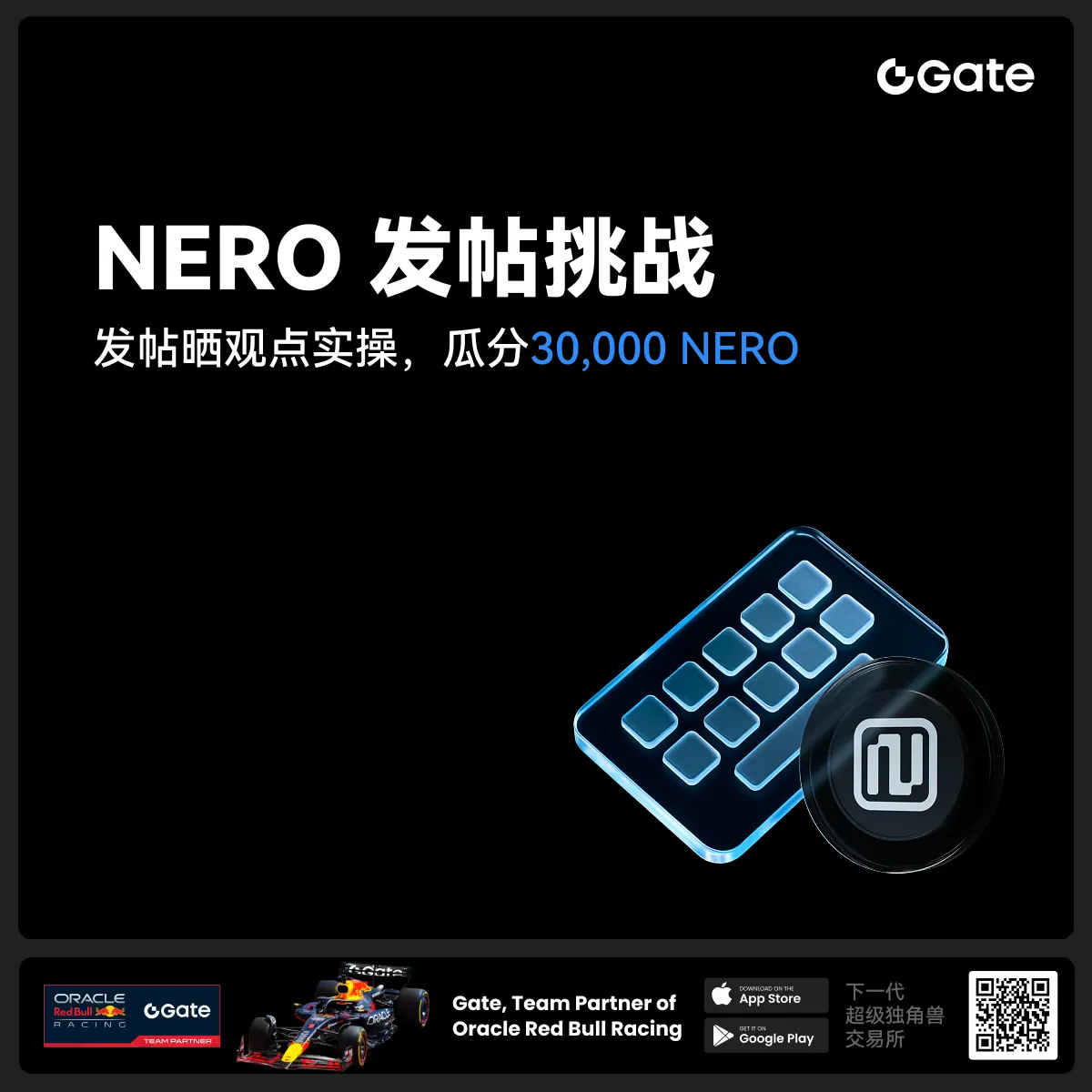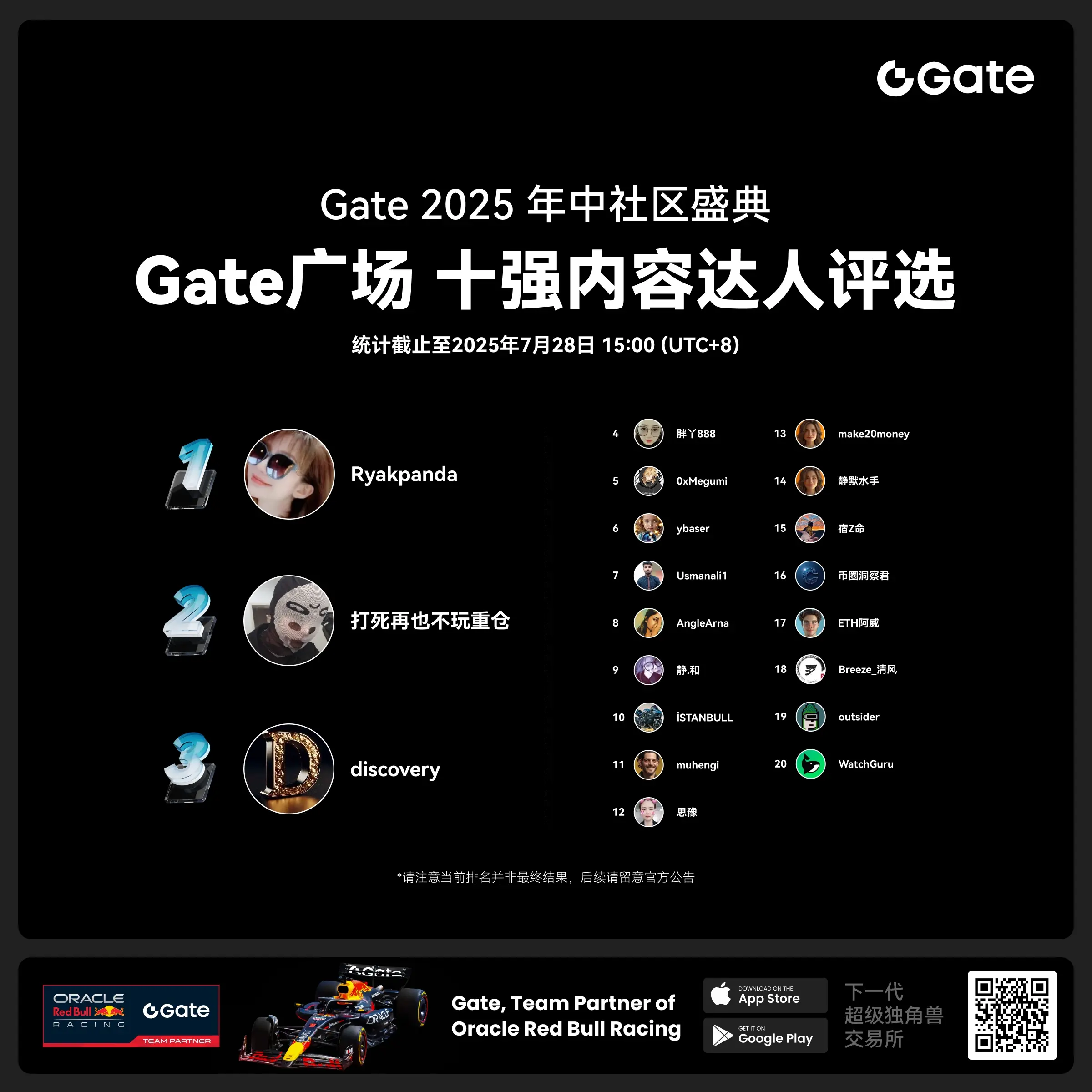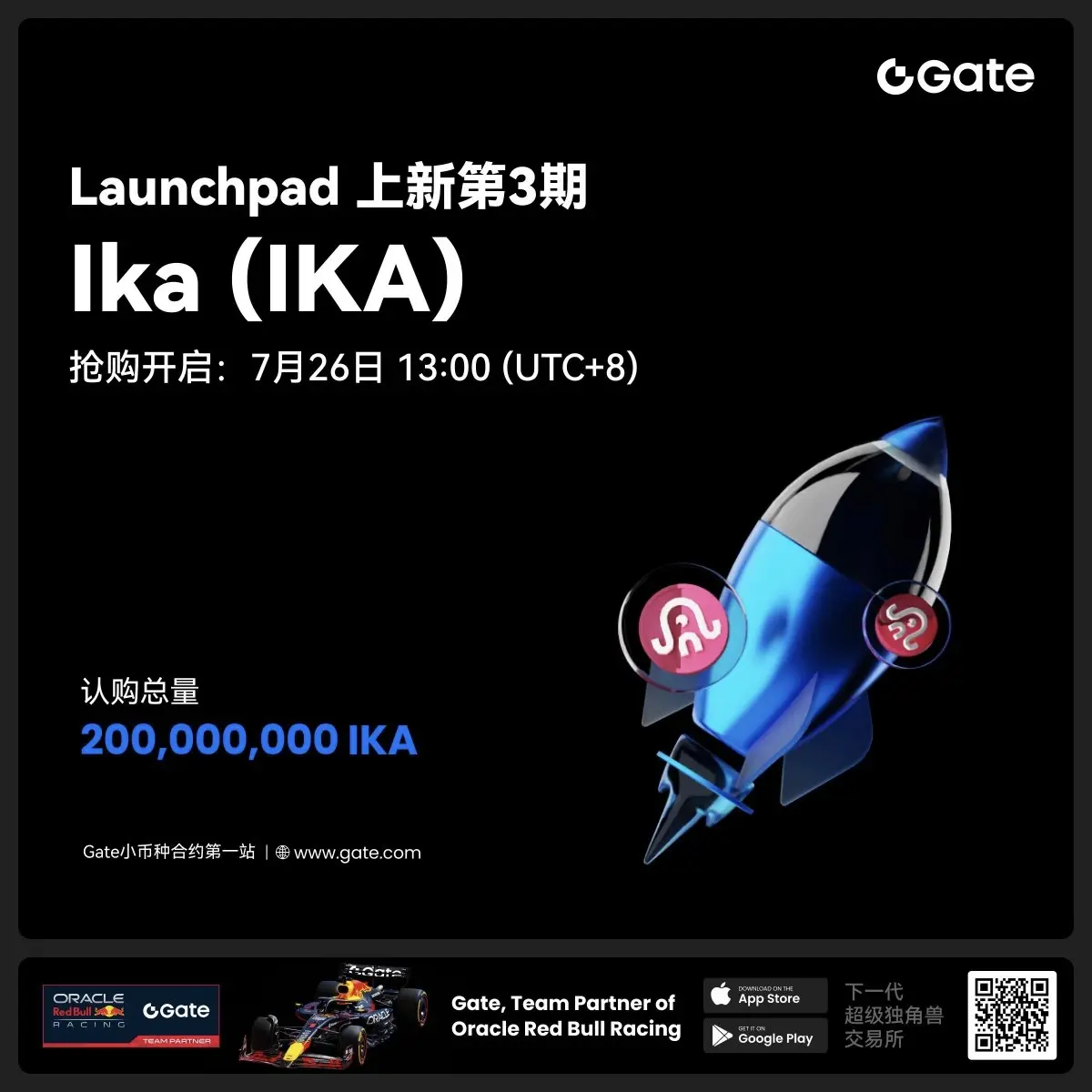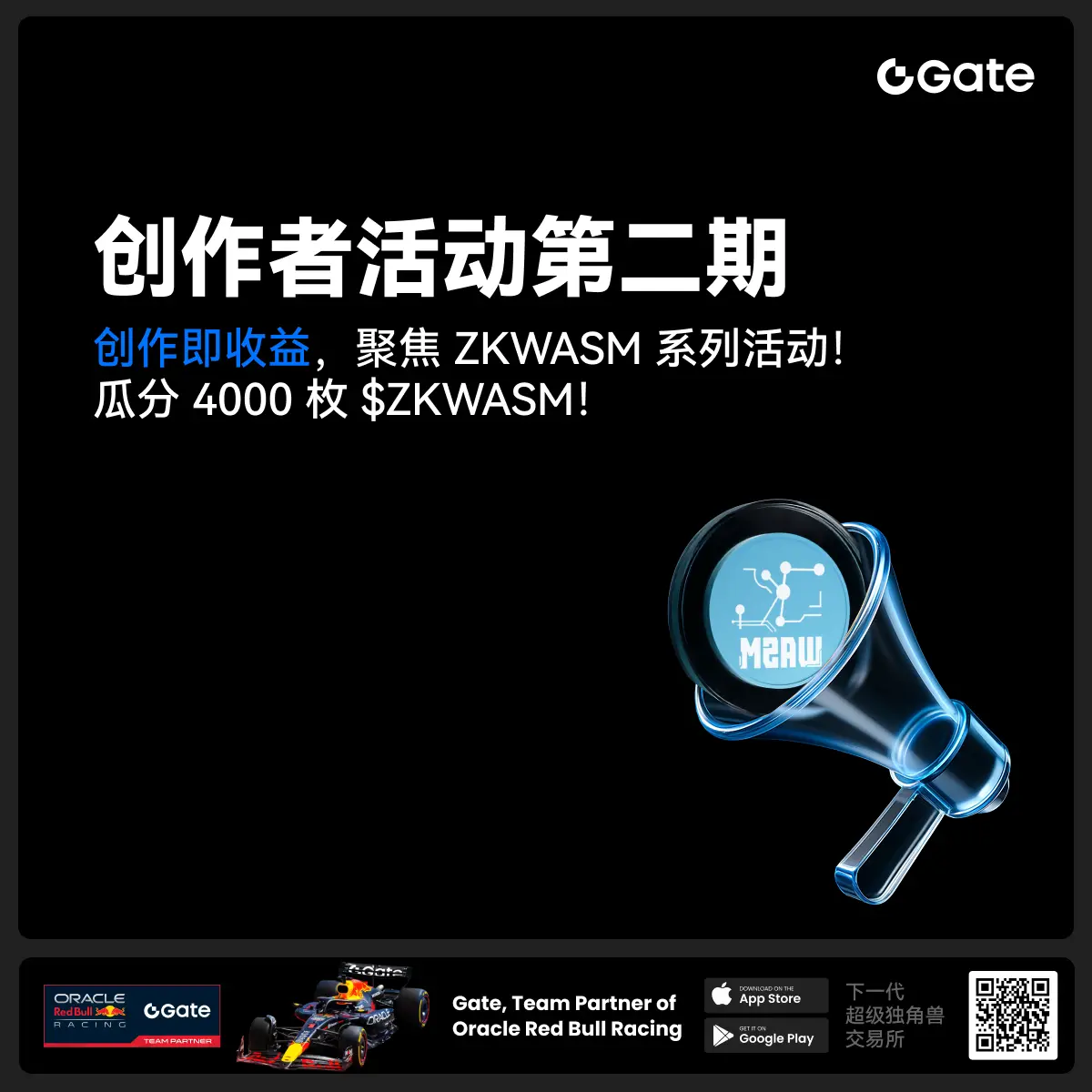- 話題1/3
11494 熱度
13768 熱度
16224 熱度
4465 熱度
20800 熱度
- 置頂
- 📢 Gate廣場 #NERO发帖挑战# 秀觀點贏大獎活動火熱開啓!
Gate NERO生態周來襲!發帖秀出NERO項目洞察和活動實用攻略,瓜分30,000NERO!
💰️ 15位優質發帖用戶 * 2,000枚NERO每人
如何參與:
1️⃣ 調研NERO項目
對NERO的基本面、社區治理、發展目標、代幣經濟模型等方面進行研究,分享你對項目的深度研究。
2️⃣ 參與並分享真實體驗
參與NERO生態周相關活動,並曬出你的參與截圖、收益圖或實用教程。可以是收益展示、簡明易懂的新手攻略、小竅門,也可以是行情點位分析,內容詳實優先。
3️⃣ 鼓勵帶新互動
如果你的帖子吸引到他人參與活動,或者有好友評論“已參與/已交易”,將大幅提升你的獲獎概率!
NERO熱門活動(帖文需附以下活動連結):
NERO Chain (NERO) 生態周:Gate 已上線 NERO 現貨交易,爲回饋平台用戶,HODLer Airdrop、Launchpool、CandyDrop、餘幣寶已上線 NERO,邀您體驗。參與攻略見公告:https://www.gate.com/announcements/article/46284
高質量帖子Tips:
教程越詳細、圖片越直觀、互動量越高,獲獎幾率越大!
市場見解獨到、真實參與經歷、有帶新互動者,評選將優先考慮。
帖子需原創,字數不少於250字,且需獲得至少3條有效互動
- 🎉 親愛的廣場小夥伴們,福利不停,精彩不斷!目前廣場上這些熱門發帖贏獎活動火熱進行中,發帖越多,獎勵越多,快來GET你的專屬好禮吧!🚀
1️⃣ #GateLaunchpad上线IKA# |IKA認購體驗
在Gate廣場帶話題曬出你的IKA Launchpad認購體驗,4位幸運分享者講瓜分$200分享獎池!
詳情 👉️ https://www.gate.com/post/status/12566958
2️⃣ #ETH冲击4800# |行情分析預測
大膽發帖預測ETH走勢,展示你的市場洞察力!10位幸運用戶將平分0.1 ETH 獎勵!
詳情 👉️ https://www.gate.com/post/status/12322403
3️⃣ #创作者活动第二期# |ZKWASM話題
在廣場或推特發布與 ZKWASM 或其交易活動相關的原創內容,瓜分4,000枚ZKWASM!
詳情 👉️ https://www.gate.com/post/status/12525794
4️⃣ #Gate广场征文活动第二期# |ERA話題
談談你對ERA的觀點/體驗,參與並推廣活動,700 ERA大獎等你贏!
詳情 👉️ https://www.gate.com/post/status/12361653
5️⃣ #MBG任务挑战# |MBG話題
分享你對MBG的洞察,積極參與和推廣MBG活動,20位小 - 親愛的廣場用戶們, #Gate 2025年中社区盛典# 投票中!🔥
🙌 廣場內容達人TOP40榜單新鮮出爐!速速圍觀榜單,爲你喜愛的達人瘋狂打call吧:
www.gate.com/activities/community-vote
每天完成【廣場】互動任務可獲得助力值,每投出30助力值即可參與抽獎一次!
iPhone 16 Pro Max 512G、金牛雕塑、潮流運動套裝、合約體驗券、熱門幣種等你抽!
助力越多,中獎機率越大,下一個抱走iPhone 16的錦鯉就是你!🧧
別猶豫,帶上你的“歐氣”,爲達人衝榜贏大獎!
https://www.gate.com/announcements/article/45974
- 🎉 Gate 廣場 IKA Launchpad 發帖活動來襲!🎉
Gate Launchpad 認購 IKA 最後24小時!曬出你的認購體驗,和大家一起分享,每個人都有機會瓜分 $200 獎池!
🎁 4位幸運分享者*$50合約體驗券每人!
🧐 如何參與:
1.在廣場發帖,帶上 #GateLaunchpad上线IKA# 標籤
2.曬出你的認購截圖 或 分享你的獨特認購小竅門/心得或趣事
3.保證帖子大於50字,內容有趣有料,原創,集齊至少3個互動(點讚/評論/轉發)
IKA認購連結:https://www.gate.com/launchpad/2336?downgarde=true
活動時間:7月28日 12:00 - 7月30日 24:00 (UTC+8)
趕快加入,分享你的精彩時刻,你就是下一個幸運兒!
- 📢 Gate廣場 #创作者活动第二期# 正式開啓!
聚焦 ZKWASM 系列活動,分享你的觀點,瓜分 4,000 枚 $ZKWASM!
ZKWASM 作爲 zk 公鏈先鋒,正在 Gate 平台重磅推廣!
三大活動聯動上線:Launchpool 認購、CandyDrop 空投、Alpha 專屬交易——不要錯過!
🎨 活動一:發布廣場貼文,贏內容獎勵
📅 時間:7月25日 22:00 - 7月29日 22:00(UTC+8)
📌 參與方式:
- 在 Gate 廣場發布與 ZKWASM 或其三大活動相關的原創內容(不少於 100 字)
- 添加標籤: #创作者活动第二期# #ZKWASM#
- 附本人參與 Launchpool/CandyDrop/Alpha 的截圖(如認購、空投或交易)
🏆 獎勵設置:
- 一等獎(1名):1000 枚 $ZKWASM
- 二等獎(2名):500 枚 $ZKWASM
- 三等獎(10名):100 枚 $ZKWASM
📋 評選標準:內容質量、互動量、項目相關性,附活動參與截圖者優先。
📢 活動二:發推贏傳播力獎勵
📌 參與方式:
- 在 X(推特)發布與 ZKWASM 或三大活動相關的原創內容(不少於 100 字)
- 添加標籤: #ZKWASM # GateSquare
- 填寫登記表 👉 https://www.gate.com/quest
從黃蜂哥NFT到千萬RWA,解析海南華鐵雙重爭議
Author: Liu Honglin
In the past few days, Hainan Huatie has suddenly become a common topic in the Web3 circle and the A-share community.
On one hand, the floor price of "Brother Hornet NFT" rose from 200 yuan to nearly 15,000 yuan in three days, sweeping the digital collection circle; on the other hand, the company officially announced the completion of the first batch of 10 million yuan of non-financial RWA (real world asset) product issuance, and the partner is the well-known licensed Web3 enterprise Weiyi Digital in the industry. In the eyes of many onlookers who don't know the truth, this seems to be a new signal of "listed companies entering Web3" and a model of "on-chain assets + equity dividends".
Laymen watch the excitement, while experts look at the door. Hainan Huatie's seemingly innovative gameplay, from NFT to RWA, is actually "wandering" on the edge of law and regulation.
Lawyer Honglin’s personal opinion is that the South China Railway case is not a compliance pilot worthy of encouragement, but may instead become a typical case of future risk outbreaks.
From NFT to RWA: What on earth is Hainan Huatie trying to do?
First, let’s talk about NFT, which is “Wasp Brother”.
This NFT is not a simple digital collection, but is bound to the right to "brand promotion income" for three consecutive years. According to the official rules released by the company in July, as long as users activate and lock NFT through the "Hua Tie Hornet" WeChat applet between July 26 and August 1, they will automatically become "brand promotion ambassadors" and can receive cash income "equivalent to the dividend amount of 50,000 shares of Hainan Hua Tie stock" every year for three consecutive years from 2025 to 2027.
The key points of this model are:
In short, you are not buying a collection, but signing an unequal agreement of "code of conduct in exchange for profit rights".
Then let’s look at the RWA project. This is Hainan Huatie’s attempt to take a further step in the industry narrative of “asset chain”.
The company claims that it has joined hands with licensed Web3 enterprise Weiyi Digital to complete the issuance of the first batch of non-financial RWA products with a value of 10 million yuan.
Unlike common real estate or accounts receivable RWA, this product does not involve the transfer of ownership of the equipment. Instead, it "digitally maps" the "right to use + right to operate" of the equipment to form a structure similar to a "digital membership card", allowing users to circulate through on-chain transfer, consignment, etc., while enjoying certain usage rights or benefits.
The key points of this RWA gameplay are:
To put it bluntly, these "digital cards" are more like "virtual leasing rights certificates" for engineering equipment, but they are packaged into a new concept of "RWA", complete the registration of rights confirmation on the chain, and introduce transferability. Combined with the brand communication mechanism of NFT, Hainan Huatie has built a composite structure of "heavy asset operation company + on-chain digital rights + user promotion dividends".
At first glance, this structure has a Web3 flavor, which not only digitizes assets, but also motivates users and promotes short-term topic dissemination. But the problem is that all these "innovations" are on the edge of the regulatory red line and even deliberately blur the legal boundaries.
This is not innovation, but a serious violation of the rules
I do not deny that Hainan Huatie has ideas for digital asset operations, but precisely because it is not a Web3 native company, it is more likely to fall into the problem of "using old thinking in a new shell."
In my opinion, this model has at least the following three major problems.
The equity structure is unclear, the return on profits depends on the company's will, and users cannot protect their rights
Whether it is the "dividend-equivalent benefits" obtained by locking NFT cards or the "equipment use rights" corresponding to RWA, the final redemption is not based on real legal contracts or smart contract execution, but completely relies on the company's rules, a small program, and a payment account registration. In essence, this model is the company "talking to itself": when it is willing to issue, you can get it; when it does not want to issue, you can't get it, and you have no right to recourse.
Such a rights structure neither constitutes an enforceable civil contract nor is it subject to securities or consumer protection mechanisms. Once a default on earnings occurs, eligibility is revoked, or rules are changed, users have nowhere to appeal.
The combination of "speech censorship + profit incentives" is an infringement on community governance
Hainan Huatie’s rules clearly state that anyone who spreads unfavorable comments on social networks will be disqualified from the company’s rights. This design of writing “discourse control” into the NFT profit rules is ostensibly “brand protection”, but in essence it is a systematic suppression of user freedom of expression.
Web3 is about freedom and autonomy, not "you can only get money if you like it." If this practice is imitated by other companies, the future of digital collections will no longer be a space for spontaneous expression of user culture and community, but a "brand mouthpiece" bound by revenue. This is not an ecosystem construction, but a corporate public relations tool disguised as NFT.
The RWA structure blurs the boundaries of financial products and may be suspected of "illegal disguised fundraising"
Hainan Huatie did not split the asset ownership this time, but packaged the use rights into NFT or digital cards, combined with dividend income. The reason why this practice has not been regulated for the time being is that it avoids one or two of the three major characteristics of "public fundraising + promised returns + no financial license". But the structure itself is still very close to "quasi-financial products".
Once the project continues to expand, the scale of RWA is enlarged, various equity combinations are designed, or third-party platform transactions are introduced, expected income lock-up and other operations are carried out, it is easy to be characterized as "disguised sale of financial products" and even touch the boundary of illegally absorbing public deposits. Especially in the context of the current tightening of financial supervision, this kind of "cross-border innovation" is very easy to be held accountable once it triggers public opinion or user rights protection.
Attorney Mankiw reminds
The biggest problem with this wave of Hainan Huatie operations is not how bold its marketing is, but that the legal structure and compliance design it relies on are too fragile.
For ordinary users:
For Web3 entrepreneurs:
Conclusion: Don’t treat testing boundaries as breakthroughs
Hainan Huatie is indeed popular this time, and it is indeed "new". But new does not mean right, and popular does not mean stable.
As a Web3 industry compliance lawyer, I hope we can see more innovative attempts from listed companies, but the premise of this hope is legality, transparency, and sustainability, rather than using "Web3 wrapping paper" to wrap up old systems, old logic, and unequal user relationships.
Don't take the probing of regulatory red lines as a breakthrough in the system. That's not progress, it's playing with fire.